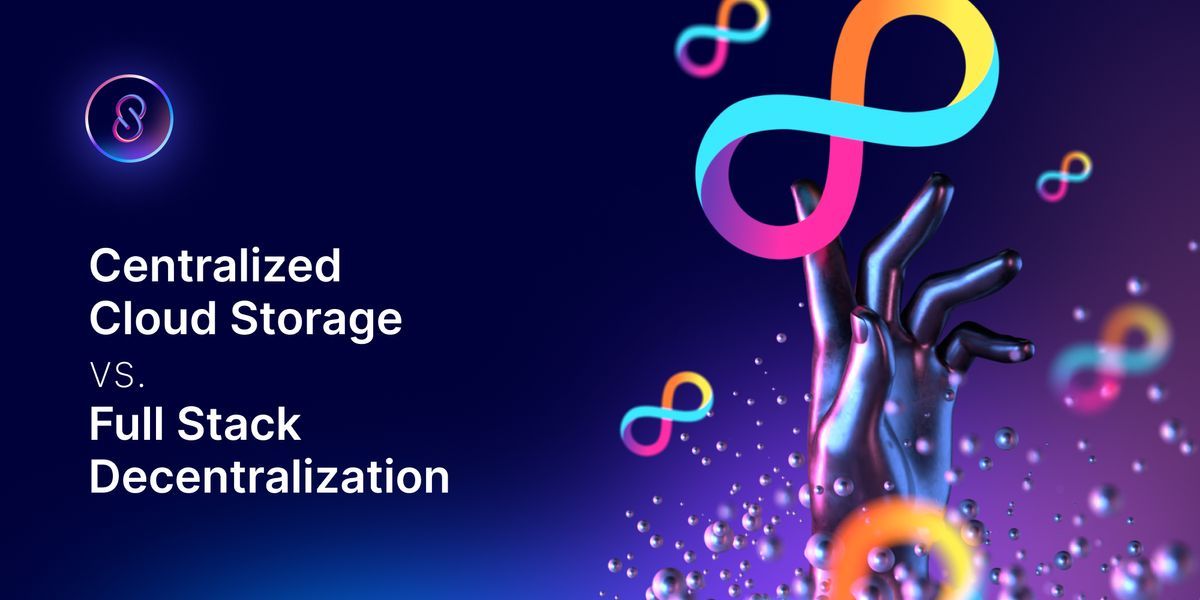
Centralized Cloud Storage vs. Full Stack Decentralization
Recently there has been a whole lot of hype about the AVAX partnership with Amazon Web Services. Avalanche is the first blockchain to form a partnership with AWS, and the move could mean increased adoption of blockchain technologies by institutional investors.
Recently there has been a whole lot of hype about the AVAX partnership with Amazon Web Services. Avalanche is the first blockchain to form a partnership with AWS, and the move could mean increased adoption of blockchain technologies by institutional investors. Institutional entities can only view this as a positive step for the blockchain industry and one that signifies an increased level of trust for the crypto industry.
The move heralds an increase in developer interest in AVAX and the wider blockchain industry. Developing on AVAX has now become easier as a result of this partnership, as developers will have AWS support for launching and managing nodes on the AVAX blockchain.
Subnet deployment is in the works to be added. A logical subdivision of an IP network, subnet deployment will allow both individual users, as well as enterprises and institutions to set up their own custom subnets through AWS.
While this is the first AWS partnership with a blockchain project, blockchains such as Ethereum and others use AWS to power their networks. With that in mind, blockchain partnership with AWS was always more of a question of when than if; and it seems as though now is the perfect time.
The real question, though, is if a move to centralized cloud computing platforms like AWS is better than full-stack decentralization?
We think the answer is no.
Storage Costs
Cloud storage has become an enormous expense for tech companies, with many building gigantic data centers in multiple locations just to handle all the centralized data. Data storage can be up to half the infrastructure bill for many tech companies.
Dfinity provides a network which is truly decentralized from end-to-end. Information can be stored on-chain with DFINITY by way of the IC's built-in decentralized storage network.
Decentralized storage is emerging as a cost-effective alternative to this centralized form of storage. Decentralized cloud storage utilizes untapped storage potential across the network and is a much more resourceful way of storing data. End-to-end encryption makes storage of data in this manner completely secure, which is not something that can always be said about centralised cloud storage.
The creation of more and more applications kept on centralized cloud storage has led to an explosion of data. Data to be stored has been increasing exponentially, and this is causing issues for storage providers. Stored data continues to be added, with no data being deleted on the back end; this is making it continuously more difficult to store data efficiently.
On top of this, the amount of data being produced annually is absolutely astonishing. In 2022 94 zettabytes of data will have been created, an amount Google calls; "an unimaginable amount of data." One zettabyte is equal to a trillionGigabytes.
Successful applications stored on centralized cloud servers are cheap to get started but face cost issues as traffic starts to increase. Costs quickly mount up for such applications and eat into profit margins.
Decentralized Storage
The advantages of full-stack decentralization over traditional centralized hosting are huge. There is no centralized point of failure. Instead, nodes are distributed across the network, and a ledger of all transactions is maintained at each node. There is no single point of entry to the network, removing many of the issues that arise when traditional centralized servers are subjected to high levels of traffic.
Domestic storage, by comparison to centralized cloud storage, is far more abundant in the world. Computers in people's homes make up the vast majority of storage in existence.
Decentralized methods of storage harness the untapped potential of all of this domestic memory. Domestic hard drives use very little of their available disc space, with 75% of drives using less than 25% of their storage capacity.
Overheads for use of decentralized storage are far cheaper, and so is bandwidth. Bandwidth costs can reach obscene prices in data centers; however, in the domestic setting, they are far more reasonable, often by thousands of dollars per gigabit second.
Those offering up their machines for use as part of the network are incentivized to provide high-quality storage. This creates healthy competition and ensures that the standard of storage provided remains high.
Another advantage of decentralized storage is that no data centers need to be built, reducing costs from the get-go. This alone is a large positive for decentralized computing, making it simpler, easier, and more efficient all round.
The stage looks to be set for the decentralized computing power provided by the IC.
The Metaverse
The Metaverse hype has been very real over the past few years, and in many ways, the world is watching and waiting for the first truly immersive implementation.
One thing is for certain; Metaverse technology almost certainly needs to make use of decentralized storage in order to live up to its full potential.
The IC network has been purpose-built to facilitate large-scale applications, such as a decentralized Metaverse. (Or multiple decentralized Metaverses, for that matter).
With Metaverse worlds sure to have a huge number of players playing across gigantic worlds, which will only grow over time, the cloud computing demands of future Metaverse projects will be extremely large. Public cloud providers such as the IC can provide distributed points of presence globally, which allows for decreased latency of graphics in Metaverse applications.
Over the next few years, Metaverse projects are sure to receive a lot more funding, and growth in the sector looks sure to continue for years to come.
DeFi
The growth of the Dfinity ecosystem has meant a higher standard of DeFi applications in Web3. With the ability to leverage the built-in decentralized storage of the network, Defi applications can function at their absolute best.
The Defi system is extremely efficient in comparison to Tradfi. It is open 24 hours per day, allows exposure to global markets, and allows trading in a whole host of different currencies.
High fees and low flexibility mean that centralized storage options are not perfect for DeFi applications. Decentralized cloud storage, on the other hand, is ideally suited.
There are many ways in which DeFi is superior, and the Dfinity ecosystem facilitates this. Over time Defi on the IC looks set to grow and grow, in user base and in popularity.
The Future
It looks like full-stack decentralization will see greater adoption as time goes on. The advantages provided to developers are huge, and applications can be allowed to reach their full potential by utilizing the technology.
Meanwhile, centralized cloud storage seems to be facing more and more issue as data keeps piling up.
Decentralized applications are only going to become better, faster, and more powerful. As more users are onboarded, the adoption of decentralized applications will speed up.
It truly is an exciting time for decentralization technology, and the Dfinity ecosystem will most certainly be at the forefront of innovation.

